A while ago, my friend Amy was immersed in the ongoing process of emptying out her childhood home and preparing it for sale. I’d struggled with years of anticipatory dread before having to face such a prospect, and I admired her matter-of-fact approach. (Interestingly, and as is usually the case, my experience turned out to be not nearly as bad as I had expected.) But I found myself batting away pangs of melancholy as I thought about what she was going through. Our families have grown close over the years, often spending Thanksgivings, and even the occasional vacation, together. I’ve written before about the special friendship that our daughters, who grew up together, continue to enjoy. We’ve gotten to know Amy’s parents, who are gracious and good-humored, like the rest of the family. Her father passed away in 2016, as did mine. Her mother was planning a move to assisted living. Even if Amy wasn’t particularly sad about saying goodbye to her girlhood home and all its contents, lovingly gathered in over the decades, I found myself feeling sad for her.
One item with an uncertain future was a dollhouse that her mother had built, decorated and painted in the 80s. Since then, it had sat, largely untouched, on a table in an upstairs bedroom. Would I be interested?
She doesn’t want it? I asked, knowing full well the answer. I could hear her mom chuckling at the ridiculous suggestion of carting a dollhouse along to her more limited quarters in assisted living. Like her daughter, she steers clear of sentimentality.
I do not, at least in cases like this. Given an easy opportunity to save a once-beloved home, whether full-size or miniature, my instinct is to say yes. Of course I wanted the house.
I had never been inside Amy’s girlhood home, but the pretty bedroom with the dollhouse prominently displayed was instantly familiar. Decorated in shades of pale blue and white, a trellis-patterned paper covered the walls. At the windows were floor-length floral draperies, expertly sewn by her mother. The furniture was graceful white wicker. I grew up with rooms like this. I spent sleep-overs with friends in rooms like this.
The blue palette of the dollhouse perfectly matched that of the bedroom. The house is larger than any I’ve made. I recognized it as the Magnolia kit from Greenleaf Dollhouses, described as a “classic country farmhouse.” I had expected to be impressed, and I was. Amy and her mother are talented in a wide range of endeavors, practical, artistic, and everything in between. Only a confident crafts person would take on as sizable and complicated a miniature house as this in a first attempt. It was one that I might have worked up to, eventually. But now, I didn’t have to. I could simply welcome the ambitious creation into my collection.
I could also happily receive its extensive and charming furnishings. Amy’s mother was nothing if not attentive to detail. She outfitted every room and hallway thoroughly, with thoughtful touches that make the difference between house and home. She painstakingly painted and papered the walls and ceilings, stained the floors, staircase and doors. She made curtains for many of the windows. There’s a wealth of delightful little objects: books, newspapers, potted plants, framed artwork, lamps, candlesticks, and ornate rugs. In the upstairs bedroom, a fancy hat rests on a stand, and a pair of dainty lady’s slippers lies beside the bed. The effect throughout is cozy, warm and inviting.
The house was in great shape, requiring only a few minor repairs. I re-glued some parts that had popped apart during forty-odd years of existence. I touched up some of the white paint, but I didn’t change the blues of the exterior, which are still fresh and clean. I love the tiny brass lights, the working French doors on the upstairs porches, and the little window boxes filled with bright red geraniums.
On the front exterior, I painted a pair of terracotta pots filled with impatiens, and some climbing roses. I added more variety to the colors of the brick foundation and chimney. I painted the shingled roof dark green, and added a white roof crest. A cheery touch that needed no refurbishment is the white chimney trellis covered with miniature silk flowers.
On the front porch, the white sofa and table remain exactly where Amy’s mom placed them, as does the blue metal mailbox, painted with the message “Welcome Friends.”
The Magnolia Farmhouse has a new place of honor next door at my mother’s. It fits in well. Nothing in that spare bedroom is new; every item has a long and winding history. Most have been enjoyed by multiple generations. The painted yellow furniture, which dates from the 1920s, was originally in my father’s childhood home in eastern Kentucky. There are dolls and stuffed animals–my mother’s, mine, and my daughter’s, and Mama’s Pretty Maid toy oven, ca. 1940. There’s a red rocking chair that was my daughter’s favorite seat at age three. There’s a tall thin chest devoted to my mother’s multitude of sewing notions. Framed prints from the 1960s were rescued from a trash bin in a church Sunday School closet. The room has become a compact museum of pleasant family memories. How appropriate that it’s now home to the miniature house so carefully assembled by Amy’s mom. Its presence reminds me of the many ways that the lives of our two families are intertwined. As I’ve learned, friends are the family that we choose.
If there’s a little house in your life that needs a loving second home, let me know. I bet I can make room.

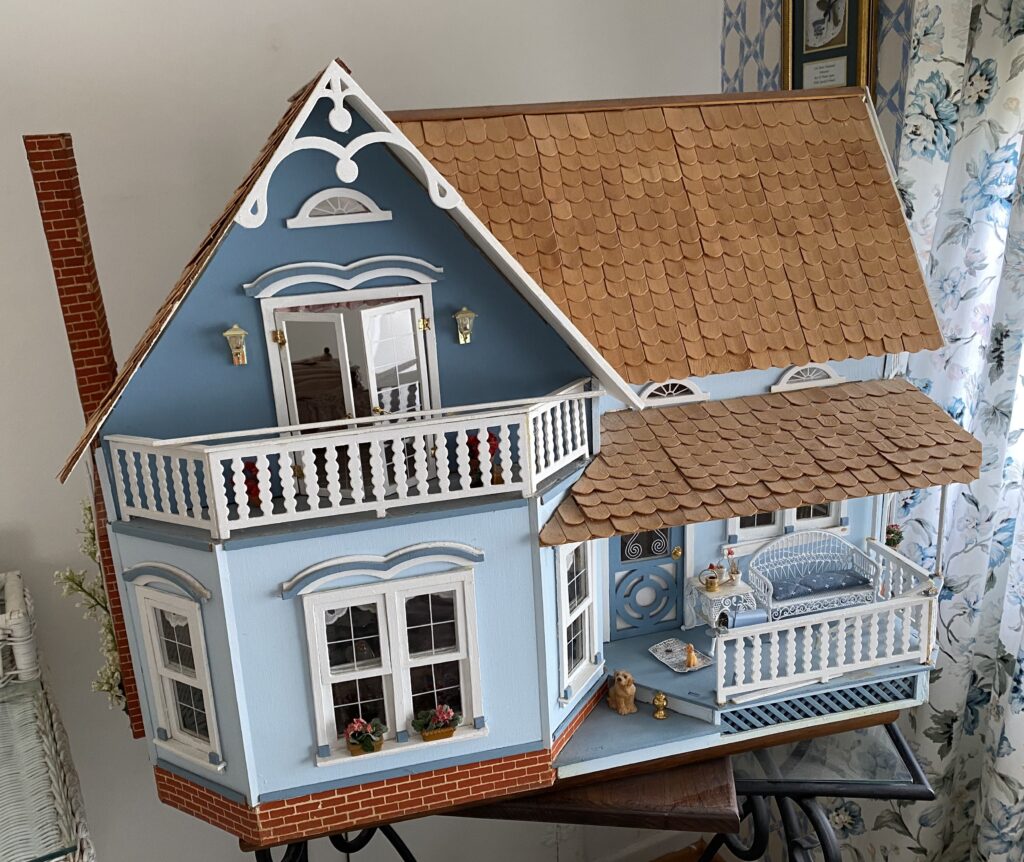
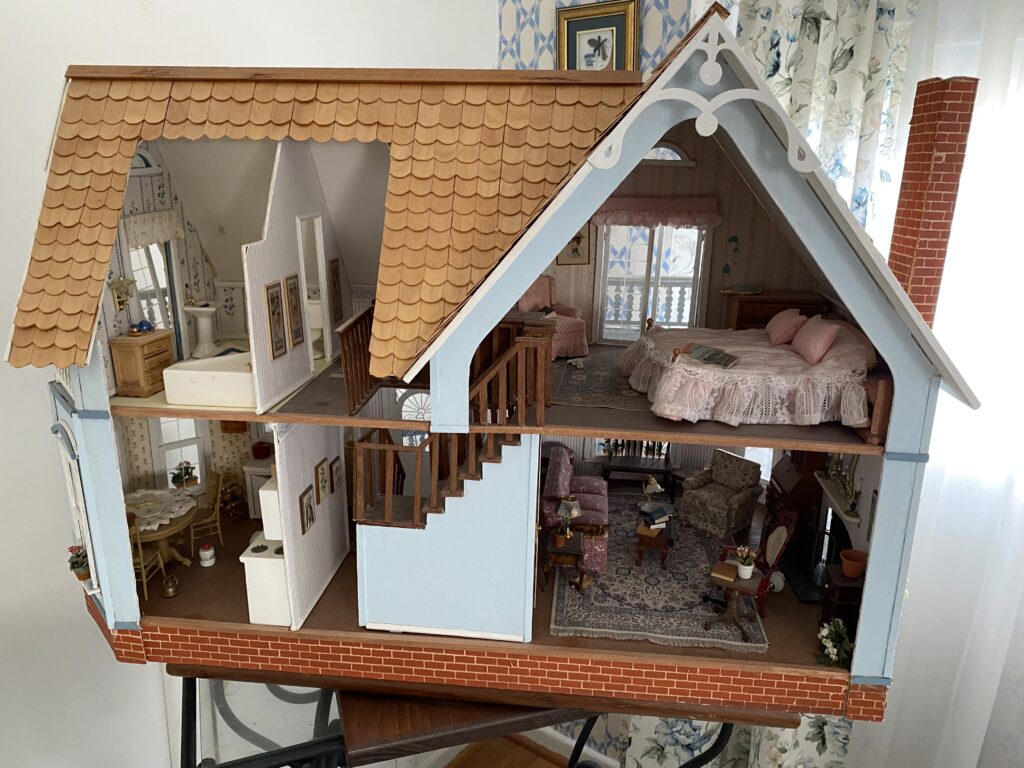
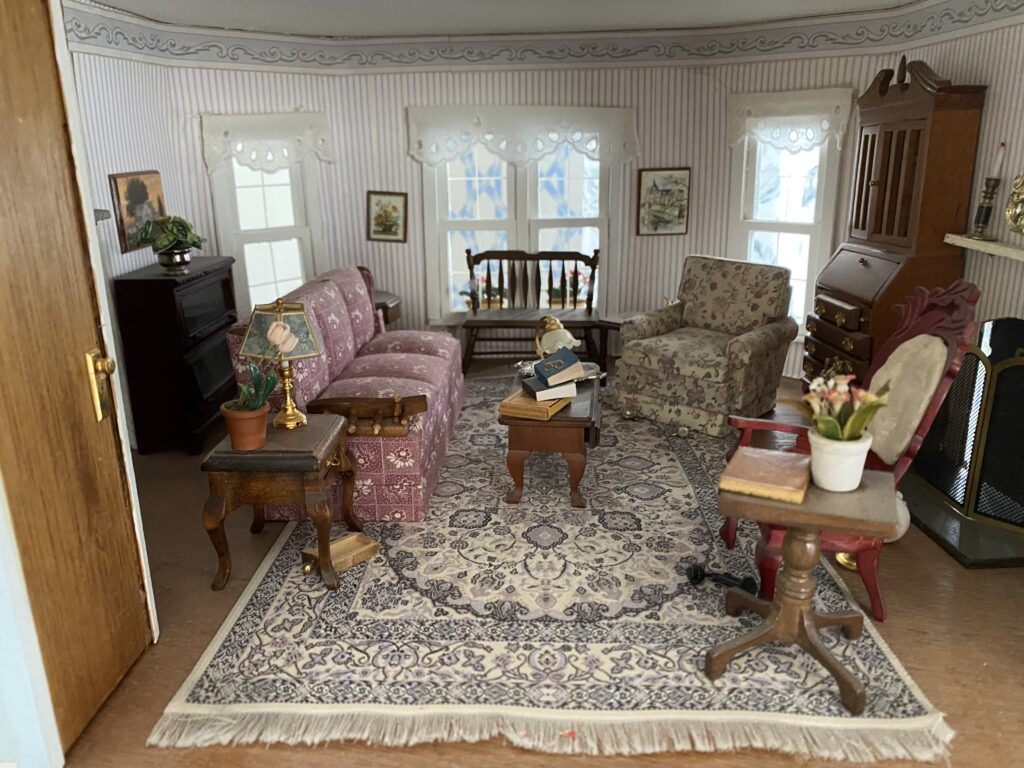
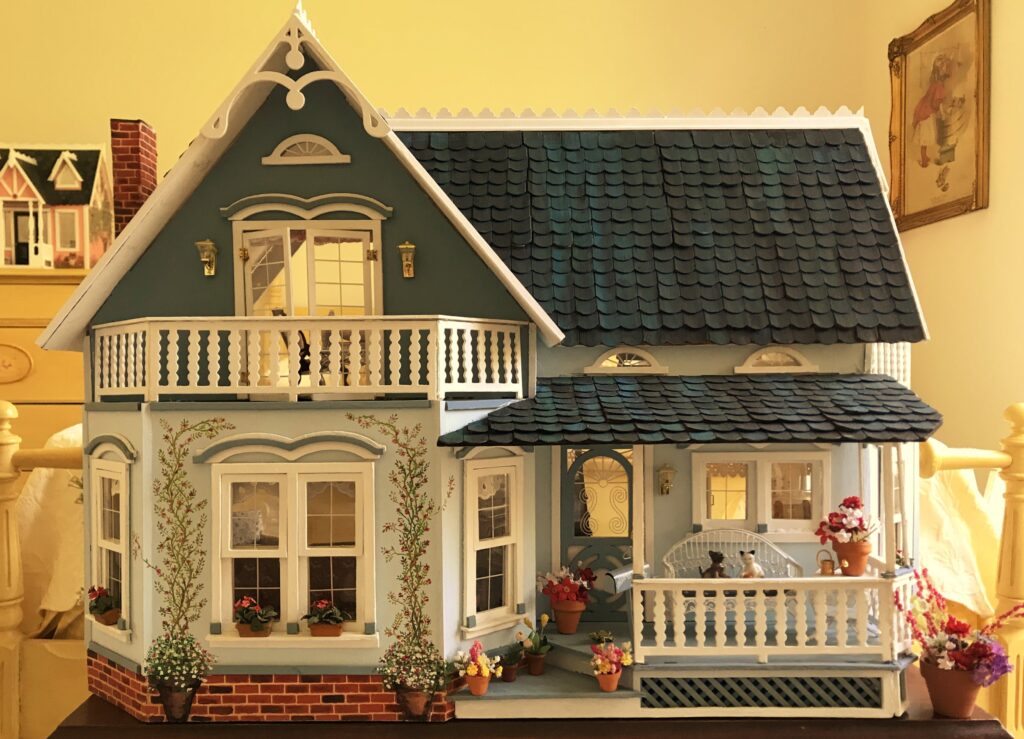
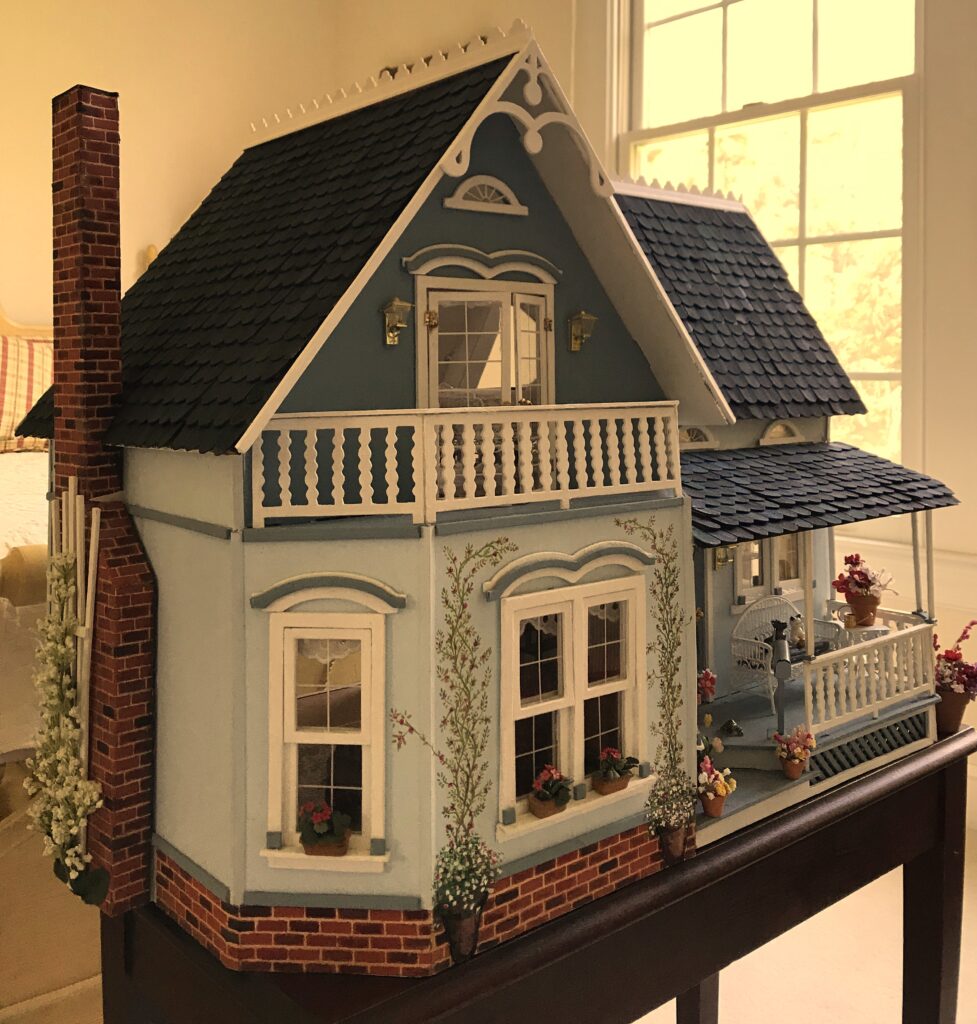
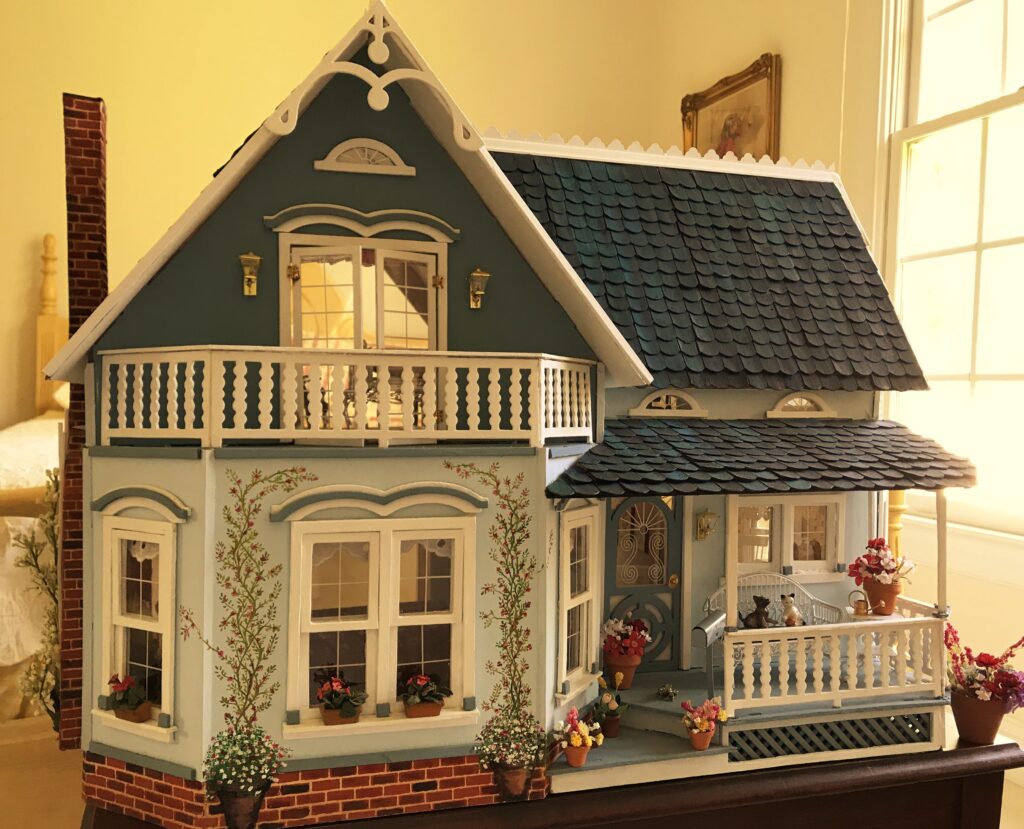
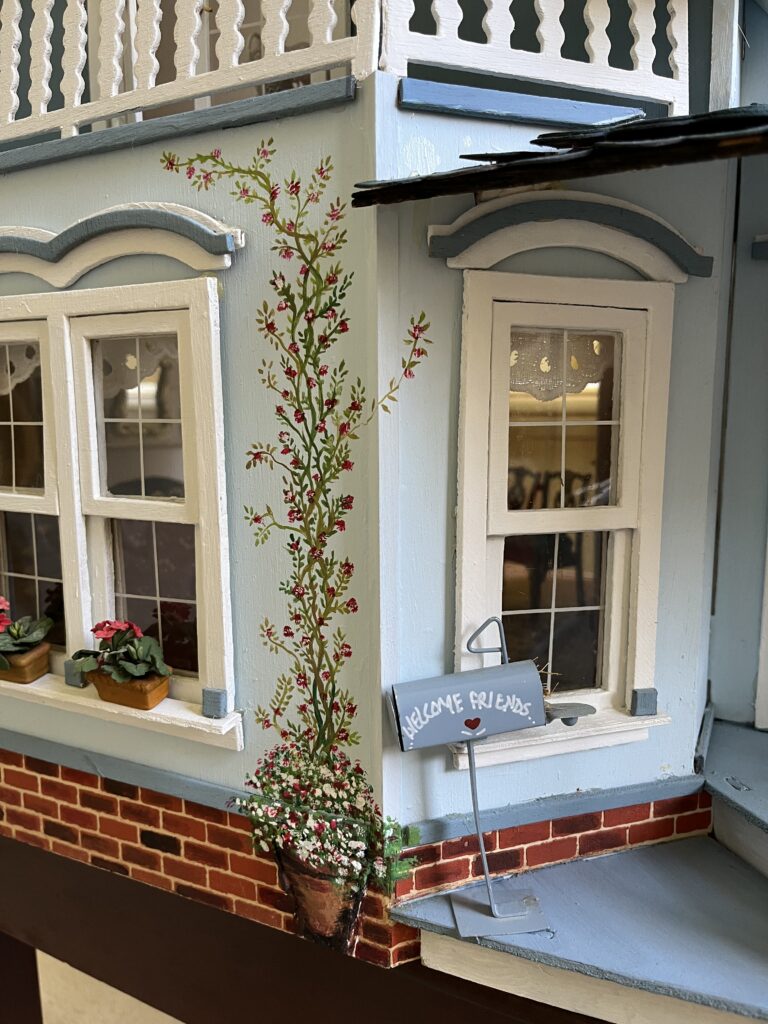
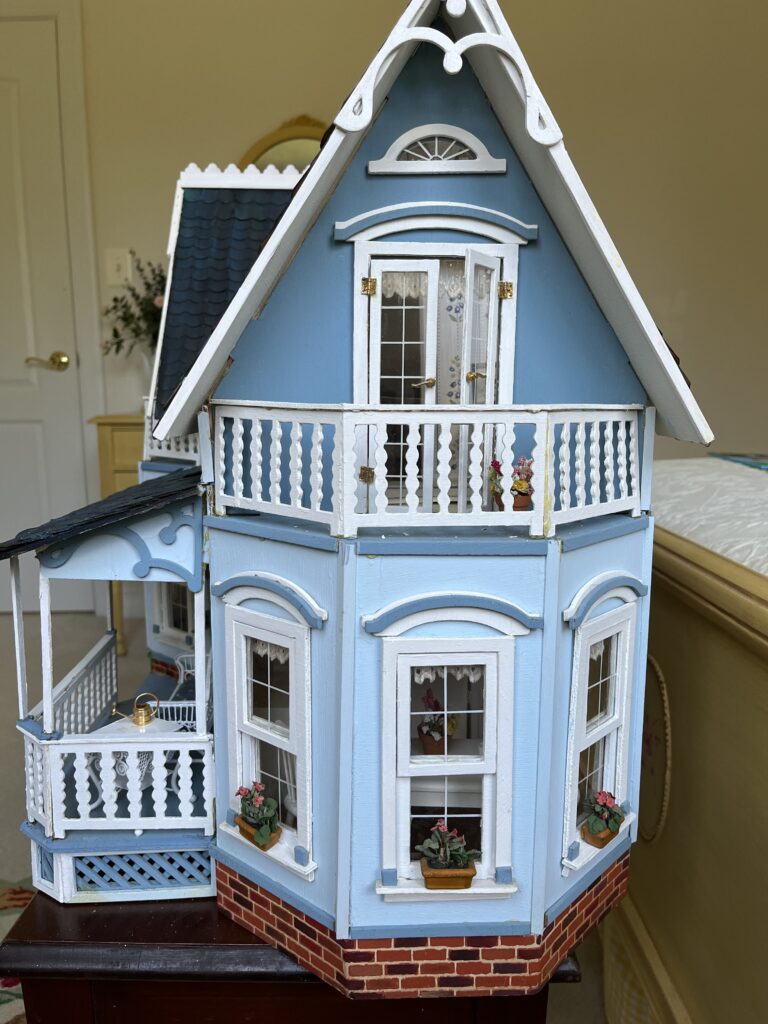
Beautiful story and dollhouse!
Thank you, Libby!